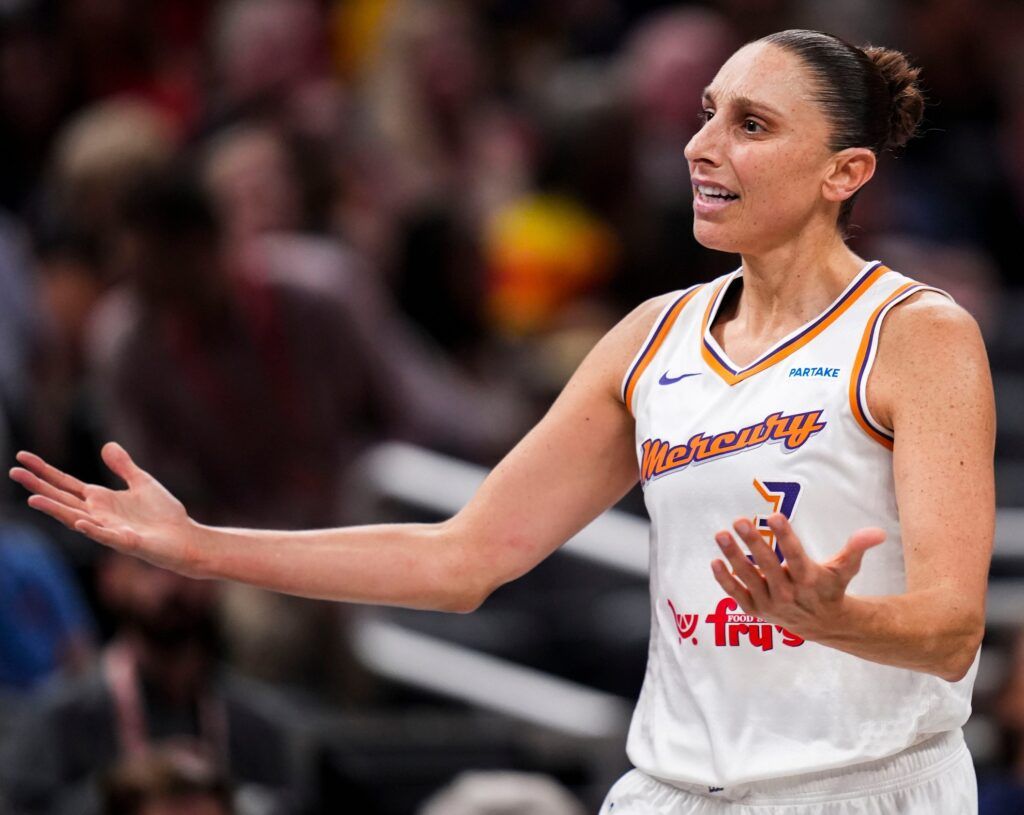The WNBA’s new era isn’t just about exciting games; it’s about what the future holds for players who want more than a highlight reel. Behind all the energy from stars like Indiana Fever’s Caitlin Clark and Dallas Wings’ Paige Bueckers is a bigger question: Will the league’s new popularity finally lead to real changes for its athletes? For years, legends built the foundation, and now players are pushing for respect that goes beyond the stat sheet. Everyone’s watching to see if this movement will finally get them what they deserve.
Why Are WNBA Stars Like Caitlin Clark and Paige Bueckers Focused on Pay?
Behind young stars like the last two No. 1 overall picks, Fever guard Caitlin Clark and Wings’ budding superstar Bueckers, the WNBA is drawing more attention than ever.
Veterans such as A’ja Wilson of the Las Vegas Aces, Napheesa Collier of the Minnesota Lynx, Skylar Diggins of the Seattle Storm, Aliyah Boston and Kelsey Mitchell of the Indiana Fever, plus Breanna Stewart and Sabrina Ionescu of the New York Liberty, had already put in the work to get the league where it is today.
At the same time, plenty of legends set the table for the current crop of WNBA players, and few made a bigger impact than former Phoenix Mercury great Diana Taurasi.
Taurasi starred at Connecticut, leading the Huskies to three national titles before the Mercury picked her first overall in 2004. She spent all 20 of her WNBA seasons in Phoenix before retiring in 2024, helping the Mercury win three WNBA titles (2007, 2009, 2014), picking up MVP honors in two of those campaigns, being named an All-Star 11 times, and earning league MVP in 2009.
Even though there’s been a boost in pay for WNBA players, the fight for more continues. This was clear at the All-Star Game this year.
With WNBA viewership soaring, players wore “Pay us what you owe us” shirts during All-Star Weekend.
“It was historic for CBA negotiations, but there definitely wasn’t a point where we agreed and we’re coming to meet sides,” Bueckers said during All-Star weekend. “We don’t want to sound ungrateful… but we think as much as we sacrifice our bodies, our minds, our time, our effort, we just feel like we play a huge part in this. And we feel like we should be rewarded for that.”
With Bueckers making such a direct point, and as long as ratings keep climbing, change may be tough to ignore.
How Did Diana Taurasi’s Career Highlight the WNBA’s Pay Struggles?
Before Taurasi’s time in the league, pay had already been an issue for WNBA players.
Taurasi, who is releasing a new documentary this month on Prime Video, simply titled “Taurasi,” spoke candidly about how tough the pay situation has been for WNBA stars.
“I’m the best player in the world, and I have to go to a communist country to get paid like a capitalist,” Taurasi said.
“I’m the best player in the world, and I have to go to a communist country to get paid like a capitalist.”
Taurasi premieres tomorrow on Prime Video. pic.twitter.com/64HU21zoOQ
— Sports on Prime (@SportsonPrime) August 6, 2025
Heading overseas to make money isn’t new for professional basketball players, but the WNBA was supposed to help keep top players in America. Creating this league was meant to change that.
“One time I came back and I was like man my parents have just gotten older and I’ve missed a big part of it,” Taurasi explained. “We weren’t making that much money so generational wealth was coming from going to Russia every year.”
Of course, making money in another country isn’t a bad thing on its own, but having to leave your family for months or sometimes even years takes its toll. The reality is, as seen with Brittney Griner of the Atlanta Dream, traveling to places like Russia comes with a lot of unknowns.
At one point, Taurasi’s Russian team, UMMC Ekaterinburg, had her sit out an entire season because her salary in Russia was $1.5 million. At that time, the WNBA’s maximum salary was just over $100,000, making it clear Taurasi was crucial in highlighting the pay gap.
By her last WNBA season, Taurasi was making $234,936 and ended her WNBA career with $1,385,416 in career earnings.
Taurasi’s rookie salary was $40,800, according to Front Office Sports.
Compare that to Caitlin Clark, who made $76,535 as a rookie in 2024, and Paige Bueckers, who is pulling in $78,831 this year as a rookie. The average base salary for 2025 is $147,745, just a hair under the old league maximum in Taurasi’s prime years.
The other big issue: The world’s best players spent months playing overseas, then came home to grind through a full WNBA season.
“Now we have to come back home and get paid nothing to play in a harder league in worse conditions against the best competition in the world. The f***ing janitor at the arena made more than me.”
Right now, the hope for the WNBA and its players is that ratings keep climbing and that the players finally start to see the payoff for all the work they put in.
